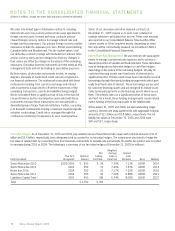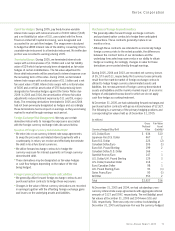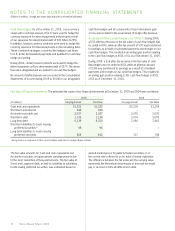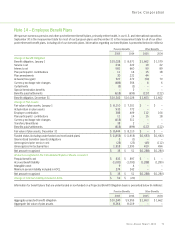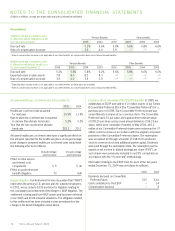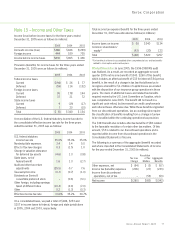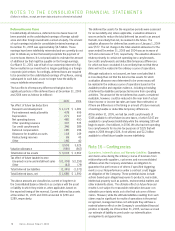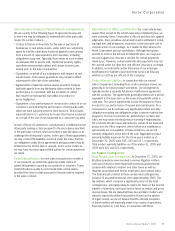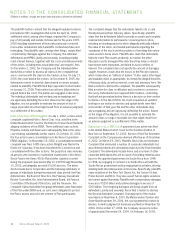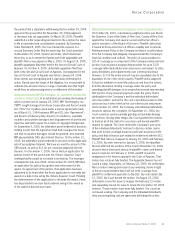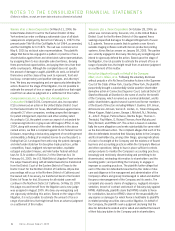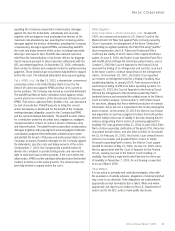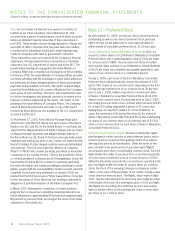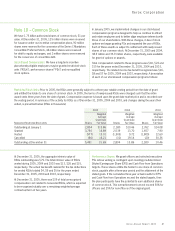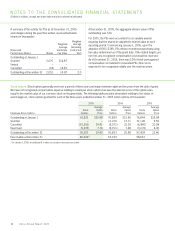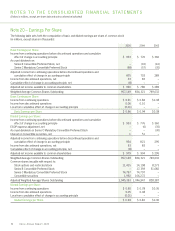Xerox 2005 Annual Report Download - page 88
Download and view the complete annual report
Please find page 88 of the 2005 Xerox annual report below. You can navigate through the pages in the report by either clicking on the pages listed below, or by using the keyword search tool below to find specific information within the annual report.
NOTES TO THE CONSOLIDATED FINANCIAL STATEMENTS
(Dollars in millions, except per-share data and unless otherwise indicated)
80
proceedings, customary local regulations may require us to make
escrow cash deposits or post other security of up to half of the
total amount in dispute. As of December 31, 2005 we have made
escrow cash deposits of $117 for matters we are disputing and
there are liens on certain of our Brazilian assets. Generally, any
escrowed amounts would be refundable and any liens would be
removed to the extent the matter is resolved in our favor. We
routinely assess these matters as to probability of ultimately
incurring a liability against our Brazilian operations and record our
best estimate of the ultimate loss in situations where we assess
the likelihood of an ultimate loss as probable of occurring.
General Tax Contingencies: We are subject to ongoing tax
examinations and assessments in various jurisdictions.
Accordingly, we may record incremental tax expense based
upon the probable outcomes of such matters. In addition, when
applicable, we adjust the previously recorded tax expense to
reflect examination results. Our ongoing assessments of the
probable outcomes of the examinations and related tax positions
requirejudgment and can materially increase or decrease our
effective tax rate, as well as impact our operating results.
Legal Matters
As morefully discussed below,we areinvolved in a variety of
claims, lawsuits, investigations and proceedings concerning
securities law, intellectual property law, environmental law,
employment law and the Employee Retirement Income Security
Act (“ERISA”). Wedetermine whether an estimated loss from a
contingency should be accrued by assessing whether a loss is
deemed probable and can be reasonably estimated. We assess
our potential liability by analyzing our litigation and regulatory
matters using available information. We develop our views on
estimated losses in consultation with outside counsel handling
our defense in these matters, which involves an analysis of poten-
tial results, assuming a combination of litigation and settlement
strategies. Should developments in any of these matters cause
achange in our determination as to an unfavorable outcome and
result in the need to recognize a material accrual, or should any
of these matters result in a final adverse judgment or be settled
for significant amounts, they could have a material adverse effect
on our results of operations, cash flows and financial position in
the period or periods in which such change in determination,
judgment or settlement occurs.
Litigation Against the Company
In re Xerox Corporation Securities Litigation: Aconsolidated
securities law action (consisting of 17 cases) is pending in
the United States District Court for the District of Connecticut.
Defendants are the Company, Barry Romeril, Paul Allaire and G.
Richard Thoman. The consolidated action purports to be a class
action on behalf of the named plaintiffs and all other purchasers
of common stock of the Company during the period between
October 22, 1998 through October 7, 1999 (“Class Period”).
The amended consolidated complaint in the action alleges that in
violation of Section 10(b) and/or 20(a) of the Securities Exchange
Act of 1934, as amended (“1934 Act”), and SEC Rule 10b-5
thereunder, each of the defendants is liable as a participant in a
fraudulent scheme and course of business that operated as a
fraud or deceit on purchasers of the Company’s common stock
during the Class Period by disseminating materially false and
misleading statements and/or concealing material facts relating
to the defendants’ alleged failureto disclose the material negative
impact that the April 1998 restructuring had on the Company’s
operations and revenues. The amended complaint further alleges
that the alleged scheme: (i) deceived the investing public regard-
ing the economic capabilities, sales proficiencies, growth,
operations and the intrinsic value of the Company’s common
stock; (ii) allowed several corporate insiders, such as the named
individual defendants, to sell shares of privately held common
stock of the Company while in possession of materially adverse,
non-public information; and (iii) caused the individual plaintiffs and
the other members of the purported class to purchase common
stock of the Company at inflated prices. The amended consoli-
dated complaint seeks unspecified compensatory damages in
favor of the plaintiffs and the other members of the purported
class against all defendants, jointly and severally,for all damages
sustained as a result of defendants’ alleged wrongdoing, including
interest thereon, together with reasonable costs and expenses
incurred in the action, including counsel fees and expert fees.
On September 28, 2001, the court denied the defendants’ motion
for dismissal of the complaint. On November 5, 2001, the defen-
dants answered the complaint. On or about January 7, 2003,
the plaintiffs filed a motion for class certification. Xerox and the
individual defendants filed their opposition to that motion on June
28, 2005. The motion has been fully briefed, but has not been
argued before the court. The court has not issued a ruling. On
or about November 8, 2004, the International Brotherhood of
Electrical Workers Welfare Fund of Local Union No. 164 (“IBEW”)
filed a motion to intervene as a named plaintiff and class repre-
sentative. That motion has been fully briefed, but has not been
argued before the court. The court has not issued a ruling.
Xerox Annual Report 2005


